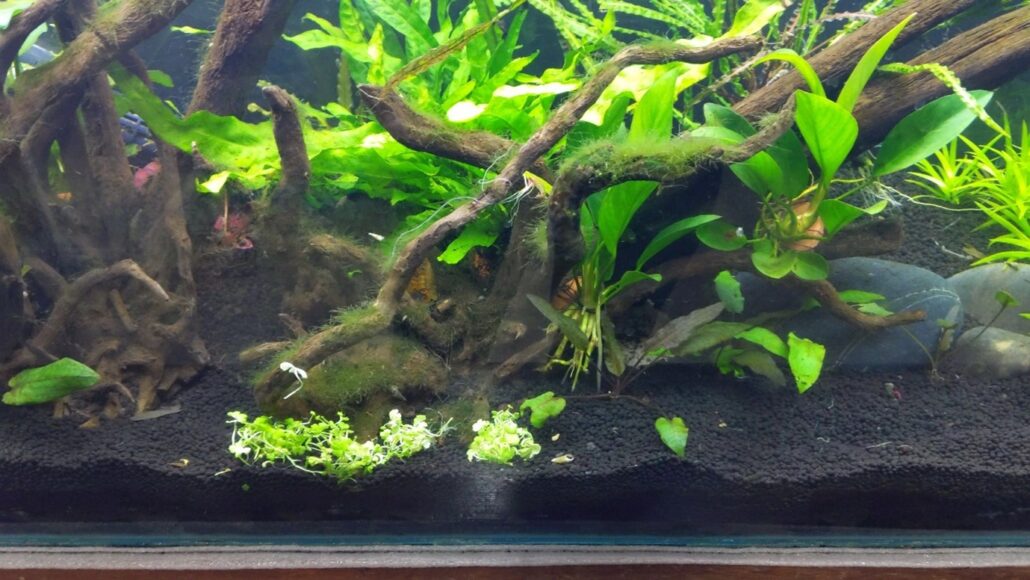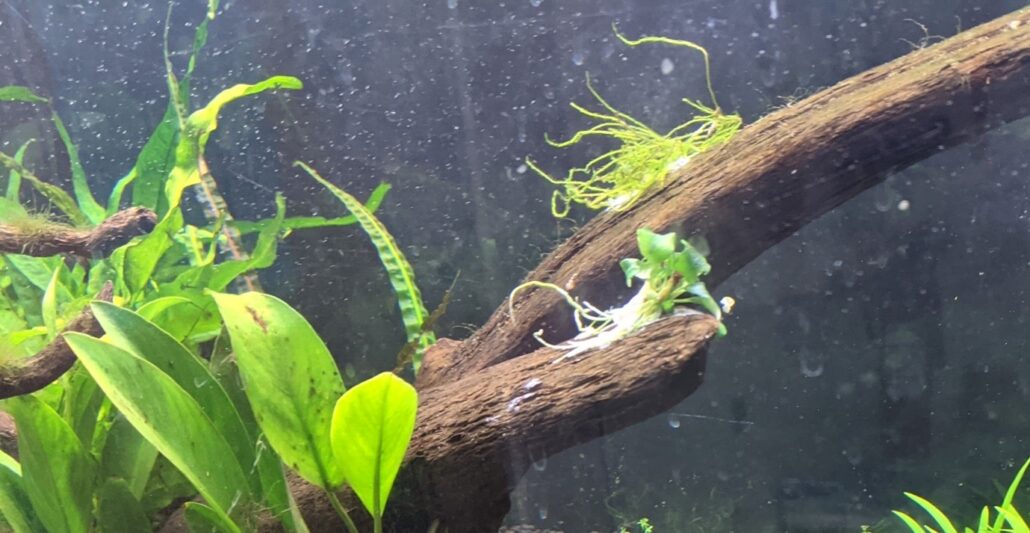Tropical Fish Club – Week 4
21/04/2021

This week we received the remainder of our plants. We ordered them during Easter from Scaped Nature (they had previously donated many plants to us!) and they arrived in time for our session. We began by washing the plants, as they were preserved in a fertiliser solution/gel, and then separated them from each other so that we could spread them out when planting.


We had a plan as to where we were going to plant them and we used tweezers to plant them into the substrate accordingly.

Each pupil rolled up their sleeves and had a go at planting. Pupils took time and realised there was a technique to getting the roots deep enough in the soil without the plant floating up when removing the tweezers. Pupils talked about how planting was a relaxing process and were eager to see new growth in the coming weeks/months.

We planted a red variety – Alternanthera mini in the midground. In the foreground we planted Micranthemum – Monte Carlo and we hope that this will carpet the front left and right of the tank.

Hydrocotyle tripartita at the front, and we hope that this will creep up the wood as it grows.

Using cyanoacrylate glue we stuck Taxiphyllum flame moss and some interesting varieties of Bucephelandra to the bog wood.

In the back ground we planted 3 varieties of stem plants; Didiplis diandra, Rotala wallachii and Ludwigia Arcuata.

Pupils selected these based on how tall they would grow as well as the unique leaf shapes and colour varieties. Growth will most likely be more noticeable sooner in these stem varieties as they will draw nutrients not only from the soil, but also the water column. We also floated Limnobium laevigatum – Amazon frogbit in our tank as this variety would draw excess nutrients from the water column and is also a great indicator of our nutrient levels.

Mr Bansal
23/04/2021

Now that we had planted all of our plants, we were keen to boost their growth. I had been in touch with John Mitchell from CO2Art, a company dedicated to enabling aquarists in maximising plant growth! He liked our project and was kind enough to send us a CO2 kit! His kit included: a dual gauge CO2 regulator with solenoid, CO2 resistant piping, a check valve, a U-bend tube, ceramic diffuser and a drop checker!

We started our session by talking about photosynthesis and considering the need for Carbon dioxide for plant growth. We discussed how CO2 was limited underwater and then opened up the generously provided CO2 Art kit. We proceeded to attach the regulator to a fire extinguisher (our source of CO2 – also, generously donated by my brother) and then plumbed in the tubing, check valve and diffuser.

We discussed; how the regulator will allow us to see the pressure of gas inside the extinguisher, as well as controlling the rate at which gas leaves. CO2 will travel through a bubble counter so we can see the rate of exiting gas, and then through the C02 resistant tubing, past a check valve (stopping tank water from flowing in the backward direction, into the regulator). Finally, gas will pass through a diffuser which would release tiny bubbles into of CO2 into the tank. The smaller the bubbles – the greater the surface area and therefore a greater absorption of CO2 into the water column.

The diffuser was placed under the filter inlet so that the incoming water could push the bubbles around the tank, again, increasing the amount dissolved into the water column. But how much is too much!? We talked about how too much could suffocate animal life in the aquarium and also decrease our pH. John had also kindly provided a drop-checker/indicator. We placed the drop checker on the other side of the tank and the colour of this would tell us whether we were injecting too little/much CO2 into our tank.

The injection of CO2 into our aquarium marks the transition from a low-energy tank to a high-energy tank. This means our growth rate will be higher as we have photosynthesis happening at a faster rate and plants will therefore need more nutrients and light. This will allow us to get the most out of our plants and we sincerely thank CO2 art for supporting us! It also leads us nicely into the realm of plant nutrients and we will be making our own plant fertilisers in the future!
Mr Bansal
Week 4
























































































